


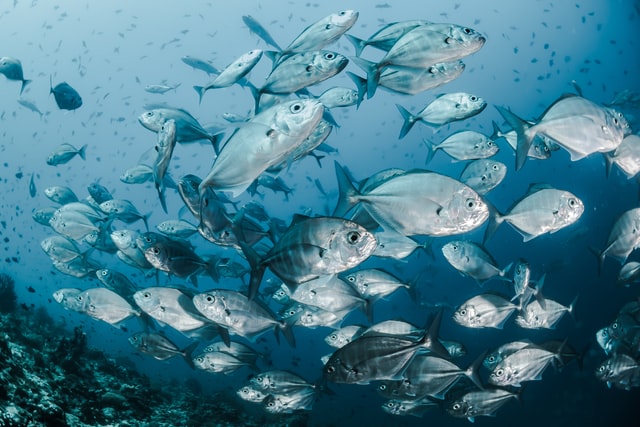
If you have ever wondered what are fish, what is the world's largest fish, and whether fish have ears, you will find plenty of fun fish facts for kids within this teaching wiki!
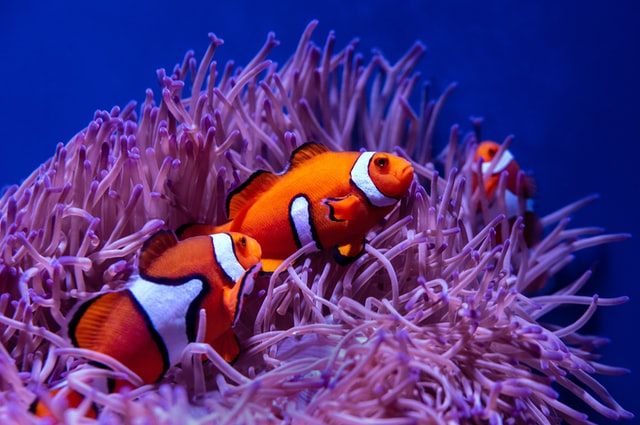
Fish are aquatic vertebrates that live in water. There are over 34,000 different species of fish with a wide range of features.
Have you ever wondered what makes a fish a fish? We have put together a list of characteristics of fish that make them distinguishable from other animals.
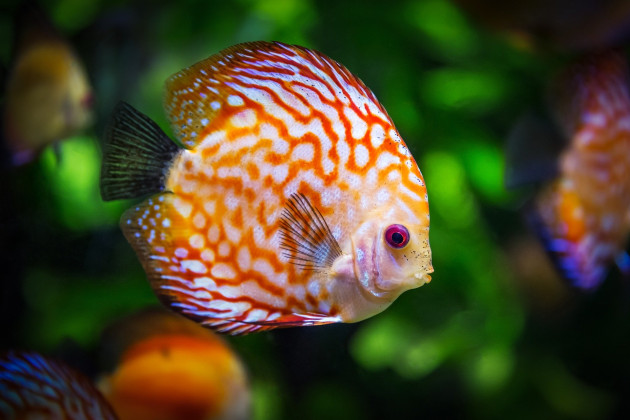
Modern fish are divided into three categories:

Fish are fascinating creatures, with complex and intricate structures. This section will take a look into the inner workings of a fish.
The majority of a fish's body is made up of muscles. All of these muscles are connected and work together to help the fish move smoothly and quickly through the water. The muscles are typically arranged in rows of V-shaped segments, each of which is attached to vertebrae. These segments contract, allowing the fish's body to bend and move through the water, propelled by strong tail strokes.
In fish, the digestive process begins with the mouth, where they use their teeth to capture their prey or collect plant foods. The shape and structure of a fish's mouth and teeth vary depending on what type of food they tend to eat. The majority of fish are known as predacious, meaning that they feed on small invertebrates or other fish. Predacious fish have simple, cone-shaped teeth along their jaws, as well as on some of the bones in the roof of their mouths and on special gill arch structures in front of the esophagus. Despite having so many teeth, most predacious fish do not use them to chew their prey; in fact, they swallow their prey whole. They use their teeth to hold their prey in their mouths and orient them so that they can swallow them head-first.
Some fish have sharp teeth, which they use for chewing and tearing up their prey. These fish include sharks and piranhas, who have extremely sharp teeth for biting chunks off of their food. Parrotfish are another species of fish that have very interesting teeth. Parrotfish have beak-like mouths with short, sharp teeth that they use for breaking off coral, as well as pavement-like teeth in their throats that they use to crush coral. Catfish, on the other hand, have tiny, brush-like teeth that are arranged in rows on their jaws. These teeth are designed to allow catfish to scrape plant and animal growth off of rocks. There are also many species of fish that have no jaw teeth but instead have strong throat teeth.
Intestines
Another aspect of a fish's digestive system that varies greatly depending on diet is the intestine. For example, in predacious fish, the intestine can be no longer than the body cavity, whereas, in herbivorous fish, the intestine can be coiled round and have a length several times longer than the entire length of the fish. The use of the intestine is primarily for absorbing nutrients into the bloodstream.
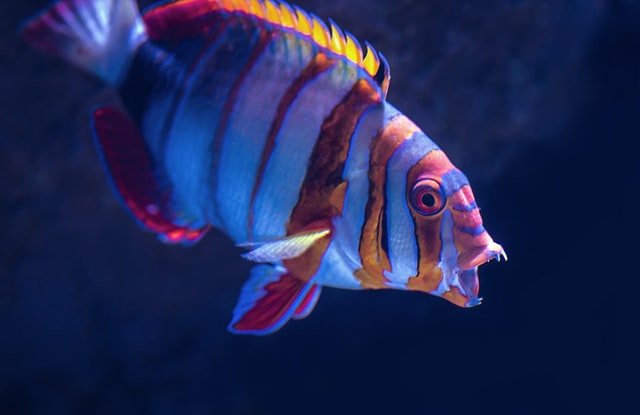
One of the big questions that people ask about fish is "How do they breathe?"
Fish live underwater, so their breathing is completely different from humans, but they still go through a process of exchanging oxygen and carbon dioxide. The majority of fish breathe by exchanging dissolved oxygen and carbon dioxide in water via their gills. The gills are located just behind and to the side of their mouths. Breathing can be broken down into a few steps:
Fish take in water continuously through their mouths.
This water then passes backward between the gill bars and over the gill filaments.
The gill filaments are where the exchange of oxygen and carbon dioxide takes place.
Similar to humans, a fish's circulatory system consists of the heart, the arteries, the capillaries, and the veins. Fish have a single circuit for blood flow, and a two-chambered heart that has only one atrium and one ventricle. The atrium collects blood that has come back from the body and the ventricle pumps it to the gills where the exchange of gases occurs. This is where the blood is re-oxygenated.

Though humans cannot smell anything underwater, the sense of smell is extremely important to most fish. A fish's nasal organ is lined with special sensory cells that pick up on chemicals dissolved in the water, such as substances from food. These cells then send sensory information to the brain through the first cranial nerve, which is how fish can smell.
Many fish also rely on their sense of smell to act as an alarm system. Other fish species, like eels, rely on their sense of smell rather than vision to locate food.
Many species of fish also have a very well-developed sense of taste. Catfish are a great example of how taste works for fish, as they are known as "swimming tongues". This is because their taste receptors - small, pit-like taste buds - cover their entire bodies. Catfish also have whiskers that they use, to supplement their poor vision, and also to boost their taste organs as they are also covered in taste buds.
Sight is another important sense for the majority of fish. The eye of a fish is not overly different from other vertebrates, but it does vary in terms of structure and adaptation. Fish living in dark and dim conditions usually have large eyes, unless they have a special adaptation that ensures their sight is not their dominant sense. In this case, the eyes will be smaller. Fish that live in brighter, often shallow waters tend to have fairly small eyes that are efficient at seeing.
Cyclostomes- strange-looking fish that have no jaws - have basic eyes compared to other species of fish. The skin of the Cyclostomes is stretched over their eyeballs which makes their vision much less effective. The majority of fish have spherical lenses that are designed to allow them to see objects that are both near and far away by moving with eyeballs.
By studying fish fossils, archaeologists have found that fish developed color vision over 300 million years ago. However, not all living fish have retained this ability.
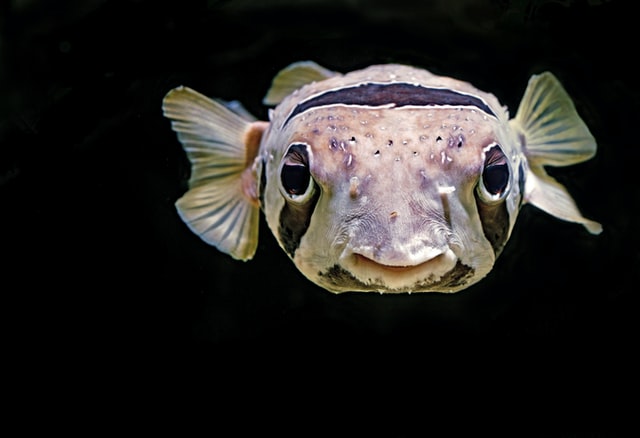
Unlike humans, fish do not have ears that protrude from their heads and help them to hear. All of the organs for hearing are internal for fish, located within their skulls on either side of the brain and behind the eyes. The process of hearing for fish is as follows:
Sound waves, particularly those at low frequencies, travel through water.
These sound waves have a direct impact on a fish's bones and fluids of the head and body.
These sound waves are then transmitted to the hearing organs.
Fish are extremely sensitive and responsive to sound, as it is often warning them of danger. For example, a trout has been conditioned to escape the clutches of fishermen by fleeing the instant that they hear footsteps on a stream bank. In comparison to humans, the range of sound frequencies that fish are able to hear is very restricted. The majority of fish communicate with one another by producing sounds in their swim bladders, rasping their teeth in their throats, and many other ways.
Other Senses
In addition to the main senses that are listed above, fish also have a range of other senses.
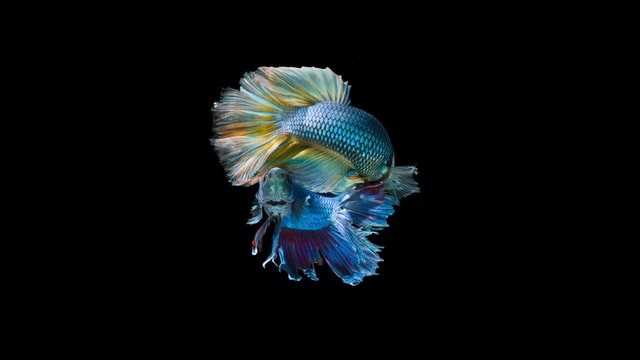
Different species of fish live in different habitats and require different things from their environment in order to thrive. However, like all living creatures, fish need to have their basic needs met if they are to survive. These include:
Fish have adapted to live in a range of habitats, such as:
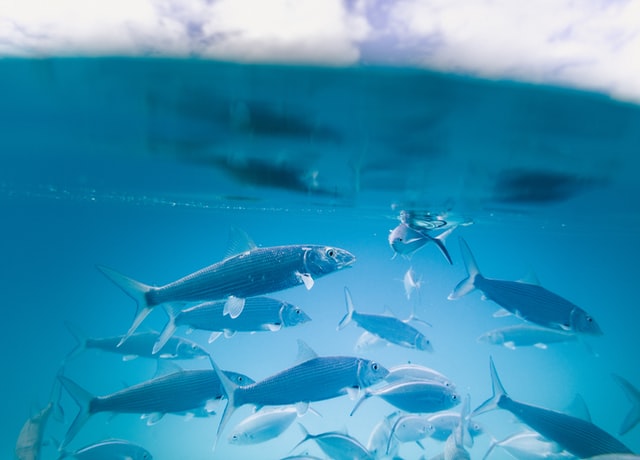
While there is an abundance of fish on the planet, some species have shared characteristics depending on their environment. Here are a few examples of how fish adapt to different habitats:
Freshwater habitats have low concentrations of dissolved salt, so fish in these environments require different physiological adaptations.
Freshwater fish have less saline body fluids than their surroundings. Their gills diffuse dissolved gasses while keeping the salts in the body fluid inside, while their scales limit the amount of water diffusion through their skin. Their kidneys are well-developed enough to allow them to reclaim salts from body fluids before excretion.
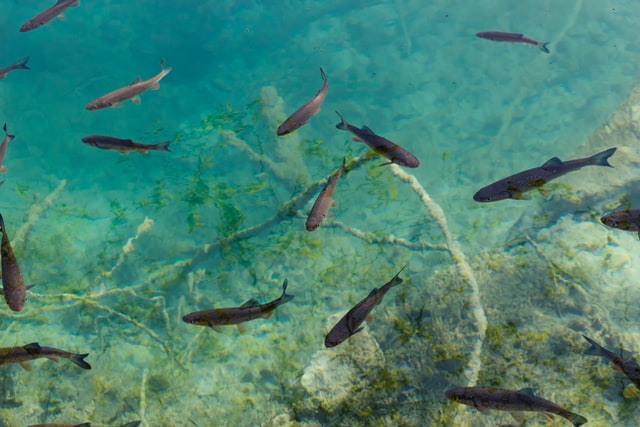
Reef fish tend to be bright and conspicuous, matching their colorful environment. Their appearance can act as camouflage against the colorful background, protecting them from predators. Plus, it helps fish identify their own species for mating.
Open water fish have bodies adapted to swim faster. However, speed is less important in a coral reef. Coral reef fish often have bodies that are flat and maneuverable, allowing them to better navigate the different nooks and crannies.
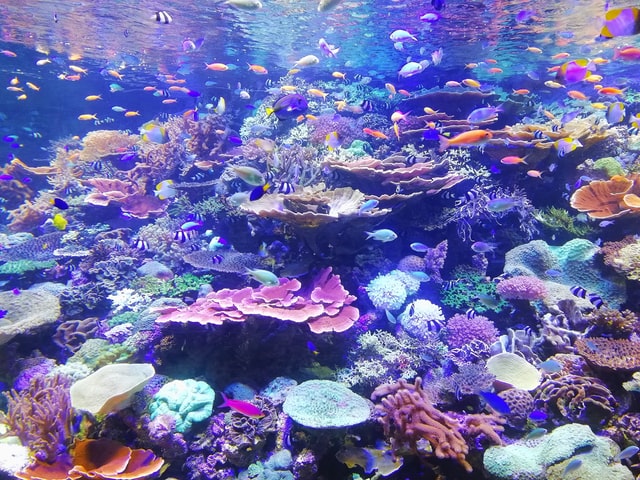
Deep-sea fish are often drab in color, or even transparent. The absence of red light at these depths means they are concealed from predators and prey, helping them to eat and avoid being eaten.
With no light, it can be difficult to mate, but deep-sea anglerfish have adapted to find a way around this. The tiny male anglerfish attach themselves to their much larger mates with their hooked teeth and establish a parasitic relationship for life. The male receives nourishment from the female, while the female never has to find another mate.
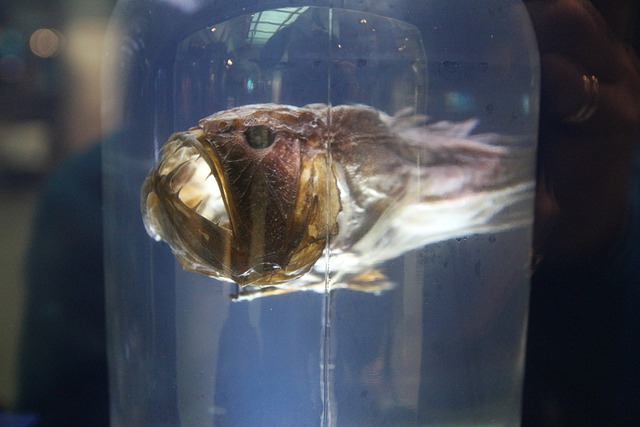
Several factors have impacted water quality and fish habitats over the last century, leading to negative consequences for fish populations. These include:
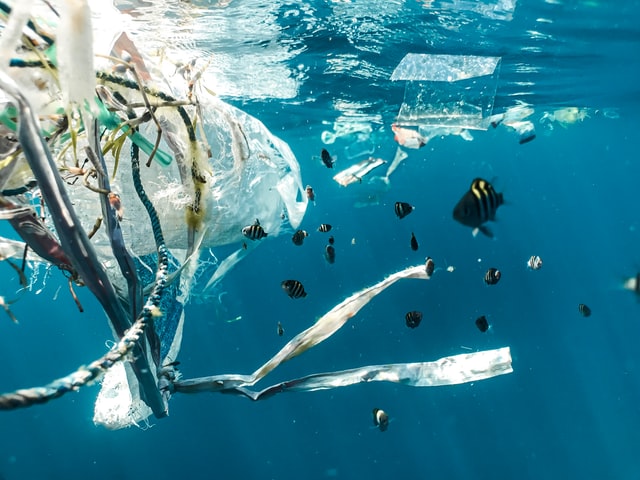
Fish make up a huge chunk of pet ownership, with 11.8 million U.S. households owning freshwater fish and 2.9 million owning saltwater fish. These species are some of the most popular pet fish in the United States:

Impress your class with your aquatic knowledge using these 10 fish facts for kids!
Supplement your students' understanding of the question "What are fish?" with our fascinating fishy teaching resources: